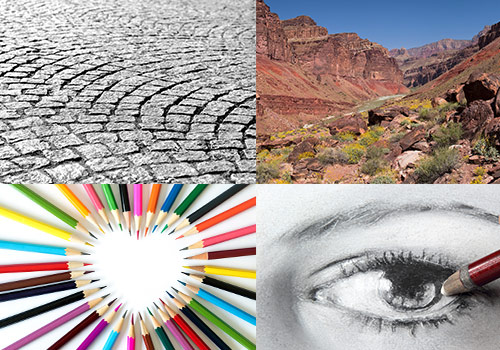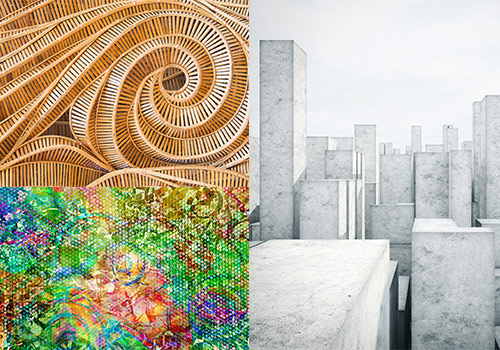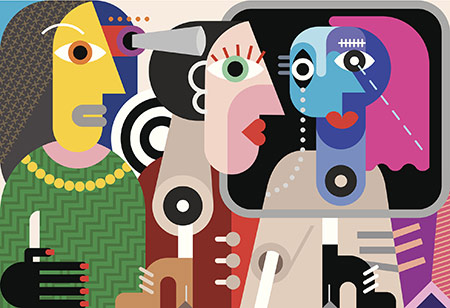Learn
Elements of Art and Principles of Design
Visual artists use various techniques and mediums materials applied in creating a work of art such as pencil, paint, wood, ink, metal, clay, or found objects in the composition The organization of the elements of art and principles of design in creating a work of art process. Fundamental elements of art, or "visual tools", assist artists in their work.

The elements of art are:
- Line: The path made by a moving point that can vary in width, direction, and length
- Shape: An area defined by line or color
- Form: A shape having three dimensions - height, width, and depth
- Texture: The actual roughness or smoothness of a surface; the way a surface looks or feels
- Color: The hue, value, and intensity of an object as seen by the human eye
- Space: The area between, around, above, below, or within objects
- Value: The lightness or darkness of a colors
In later lessons, we will explore these terms more fully and you will learn how artists use these elements to create desired emotions and specific effects in their art work.

Many artists display an intuitive ability to use the elements of their art forms to create works and to manipulate how viewers respond to those works of art. We call this application using the principles of design. The principles of design are guidelines artists use to create works of art and control how viewers react to these works. They are the rules that artists use to create and organize works of art.

The principles of design include:
- Balance: The art principle that refers to the arrangement of elements in an artwork. Balance can be either formal symmetrical, informal asymmetrical or radial.
- Proportion: The feeling of unity created when all parts (sizes, amounts, or number) relate well with each other. When drawing the human figure, proportion can refer to the size of the head compared to the rest of the body.
- Movement: The path the viewer's eye takes through the work of art, often to focal areas; such movement can be directed along lines, edges, shape, and color within the work of art
- Rhythm: Created when one or more elements of design are used repeatedly to create a feeling of organized movement. Rhythm creates a mood like music or dancing. To keep rhythm exciting and active, variety is essential
- Harmony: A principle of art that combines elements of art in a composition to stress similarities of separate but related parts
- Emphasis: Part of the design that catches the viewer's attention. Usually the artist will make one area stand out by contrasting it with other areas. The area could be different in size, color, texture, shape, etc.
- Variety: The use of several elements of design to hold the viewer's attention and to guide the viewer's eye through and around the work of art.
As with the elements of art, you will learn more about these terms throughout this unit.
